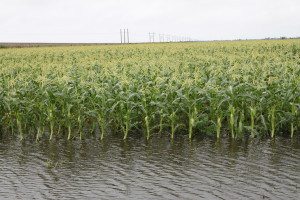Severe Florida weather damages crops, cuts volume.
Buyers should expect product shortages and continuing high prices as south Florida growers assess damages from late January rains and high winds.
From Jan. 26-28, up to 8 inches of continuous rains flooded fields of sweet corn, green beans, celery, radishes, leafy greens and other vegetables in Palm Beach County, the state’s principal growing area for those winter and spring crops.
In southwest Florida near Immokalee, torrential rains were problematic but high winds caused more severe damage than the rains which more easily drained from plastic and high beds, said Adam Lytch, operations manager for Raleigh, N.C.-based L&M.
Winds of more than 80 mph in the Naples and Immokalee areas broke-up bell pepper plants that were in blossom stage just beginning to set fruit and exposed them to the damaging sun, he said.
The winds damaged peppers that were expected to bear fruit in early March and also cut squash yields and whipped cucumbers that were blooming.
Lytch said he doesn’t expect any production gaps.
“We still have product but it’s having extra product to sell that’s really nonexistent,” he said Feb. 3. “The quality is good. There’s just not enough of it to meet demand. The wind took so much of the product away.”
Assuming favorable weather conditions, Lytch said he expects pepper and squash production to normalize by mid-March.
Corn, beans
The torrential rains severely damaged south Florida’s corn and beans and Jon Browder, sales manager for Pioneer Growers Co-op, said he expects tight supplies through spring.
Homestead corn production has been in a supply gap for more than two weeks and Browder said he expects sporadic production through early March.
“As far as Pioneer goes, we probably won’t have any volume of corn until late March and early April,” he said Feb. 3. “On beans, buyers should expect February and March to bring lighter than normal volumes and higher than normal prices through March with lighter volume through April.”
The heavy rains prevented growers from entering fields and should produce planting gaps.
Browder said Pioneer growers expected to resume light corn harvesting the week of Feb. 8.
Arthur Kirstein, coordinator of Palm Beach County Extension Service’s office of agricultural economic development, characterized damage as high.
As many growers are keeping damage information to themselves, he said it could be late February before solid damage estimates emerge.
“This is as bad as I’ve seen it in quite a while,” Kirstein said. “In some of these tomato and pepper fields, everything got knocked down with the winds and I don’t see any crop that didn’t get affected by this, even if minimally. This will have big repercussions within 20-30 days.”
By: The Packer, February 04, 2016.



